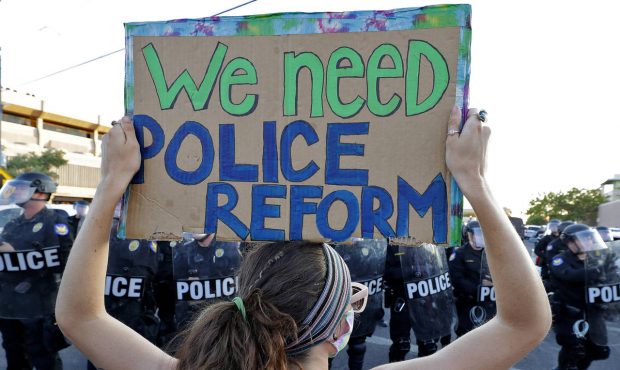
Police Violence: Causes and Solutions
Evolution produced Homo sapiens with a propensity for tribal behavior. Tribal assaults, wars, and intergroup conflicts have been a feature of human interactions throughout our history. Most recently, conflicts between the police and the people they are hired to protect (most prominently, members of black communities) are under public scrutiny. Understanding how humans got to this point will provide insights into its causes and solutions.
A persistent theme throughout human history is the quest to advance our understanding of nature's laws, a quest that will not end until humans or their descendence are extinguished; there will always be unknown relationships we are compelled to explore and understand. Recent conflicts in the news led me to explore the origins of conflicts between Homo sapiens for promising approaches to police reforms.
Homo Sapiens undoubtedly developed their obsession with cause and effect hoping to avoid harm from mysterious sources. For tens of thousands of years, Homo sapiens observed and feared unanticipated disasters not knowing how or why they occurred. A hurricane destroys everything in sight, a volcano explodes, an unseen disease kills members of a family, all with no obvious cause. Primitive humans around the world sought answers from shamans or their equivalent who were believed to have access to spirits that could control or explain the unknown causes and even cure diseases (the placebo effect presumably worked as well then as it does now).
While shamans were consulted to ease tensions by communicating with spirits, they couldn't give people the ability to read minds; humans successfully evolved surviving conflicts of all flavors by associating with trusted companions and being wary of strangers bearing unknown risks and intentions.
Conflict is rooted in stress and fear. Andrew Huberman, a Stanford neurobiology professor, states that the human brain is "...mostly a stress-reactive machine. Its primary job is to keep us alive, which is why it’s so easy to flip people into fear all the time.” An important survival reaction is triggered by a small almond-shaped structure sitting deep in our brain performing many functions one of which is to act as a "watchdog" always on the alert for threats. When something frightening happens, the amygdala issues an exaggerated response that triggers the feeling of fright we all have experienced. The initial emotional reaction is moderated by a more reasoned assessment of the situation in our prefrontal cortex.
Conflict is rooted in stress and fear. Andrew Huberman, a Stanford neurobiology professor, states that the human brain is "...mostly a stress-reactive machine. Its primary job is to keep us alive, which is why it’s so easy to flip people into fear all the time.” An important survival reaction is triggered by a small almond-shaped structure sitting deep in our brain performing many functions one of which is to act as a "watchdog" always on the alert for threats. When something frightening happens, the amygdala issues an exaggerated response that triggers the feeling of fright we all have experienced. The initial emotional reaction is moderated by a more reasoned assessment of the situation in our prefrontal cortex.
 Evolution drove primates to transition from solitary nocturnal foraging to diurnal gathering and hunting of food. Exposed during daylight in the plains and jungles of Africa without sharp claws or large teeth required special survival skills. Evolution separated humans from other primates to become the most advanced species on earth despite their weaponless physique; they succeeded because their brains developed advanced abilities to understand cause and effect and use that ability to survive and thrive.
Evolution drove primates to transition from solitary nocturnal foraging to diurnal gathering and hunting of food. Exposed during daylight in the plains and jungles of Africa without sharp claws or large teeth required special survival skills. Evolution separated humans from other primates to become the most advanced species on earth despite their weaponless physique; they succeeded because their brains developed advanced abilities to understand cause and effect and use that ability to survive and thrive.
The drive to exploit cause and effect created the printing press, the industrial revolution, and the technologies we use today to navigate roads anywhere in the world and observe the earth from space. The human compulsion to understand cause and effect is never-ending (contrary to the famous satirical quote from Charles Duell, who in 1899 was rumored to suggest closing the US patent office he headed because "...everything that can be invented has been invented)".
The amygdala also promotes prejudice and a natural tendency to revert to tribal behavior, asserts Dr. Bobby Azarian, a Cognitive Neuroscientist. The emotional response triggered by the amygdala is moderated by the prefrontal cortex acting as the "watchdog's handler." However, if the prefrontal cortex is impaired, the watchdog can become dangerous.
The amygdala also promotes prejudice and a natural tendency to revert to tribal behavior, asserts Dr. Bobby Azarian, a Cognitive Neuroscientist. The emotional response triggered by the amygdala is moderated by the prefrontal cortex acting as the "watchdog's handler." However, if the prefrontal cortex is impaired, the watchdog can become dangerous.
Non-human primates employ simple forms of cause and effect such as the ability to use a tool to accomplish a task but they lacked a human's ability to reason how and why the cause brings about the effect. Humans have a unique capacity to make logical connections to find the unseen rules governing the way things work. I imagine primitive humans watered a plant and it became green. They observed rain turning plants green. An epiphany leads to agriculture which begets villages.
LiveScience reports that when subjects are exposed to an unfamiliar face the amygdala becomes very active but settles down with repeated exposures to the same face. A Havard publication describes a study that suggests humans (perhaps unconsciously) fear diseases transmitted by unfamiliar persons. When separated populations are exposed to outsiders, novel contagious organisms often cause illnesses that can kill large numbers of indigenous people. It is not unreasonable to hypothesize that evolution instilled in humans a wariness of intermingling with unfamiliar people fearing bad intentions or harm from correlating disease with a visit by strangers.
Subsequent studies found that human brains process visual images of same-race faces differently from other-race faces and may contribute to implicit racial bias (IRB). Jennifer Eberhardt at Stanford University studied the neurological foundation behind the phrase "they all look alike" when members of one race view images of individuals of a different race (though the effect typically can be diminished with exposure). People may strongly believe they have no racial bias but IRB can lurk in the primitive, reactive parts of the brain. Members of outgroups are typically viewed with responses ranging from vigilance to fear.

Police reform is front-page news due to conflicts between blacks and police. The problem is frequently blamed on inadequate vetting or training of police. Others blame racial bias or disproportionate exposure to criminal behavior.
Corrective measures have had little impact on solving the problem in part because the focus has been on the "effect" half cause and effect rather than on the "cause" half.
For example, existing police recruitment and selection processes seek individuals who have exceptional emotional control expecting the trait will reduce violent confrontations. Such emotional control is governed by the prefrontal cortex of the brain. A number of recent studies using brain scans demonstrate that individuals with what researchers call "high emotion-regulation" (strong emotional control in normal circumstances) tend to lack an ability to control their emotions in "high state testosterone levels" (surges of testosterone caused by the most challenging social encounters). Brain scans using fMRI indicated that when a person with high emotion-regulation is confronted with a challenging social encounter, as happened with George Floyd, the prefrontal cortex has diminished control over the amygdala, the watchdog is suddenly off-leash.
The single insight -- keep the amygdala watchdog on a leash -- has had widespread positive impacts on police interactions in many communities. More than a decade ago Problem-Oriented Policing (POP) was implemented in my community of San Diego and elsewhere. POP concentrates on improving community relationships in areas where crime is concentrated. This approach has had a significant effect on reducing crime and violent police conflicts by reducing the tension in previously challenging social encounters. While POP wasn't designed to directly alter the recruitment of police, it did reduce conflict overreaction by both police and the offenders.
 |
| Dr. Enerhardt With Oakland Police |
Dr. Eberhardt employed both concepts consulting with the Oakland, California police to help reduce racial bias and crime. Deputy Chief LeRonne Armstrong commented “We’ve paid many consultants over the years to come in and do studies, but they’d leave us with their findings and would walk away. Dr. Eberhardt’s team decided to stay on and help us through that process … and that’s why we got so much buy-in from our officers.”
We tend to solve our problems by attempting to alter effects rather than asking how causes might lead to more effective solutions. Researching the causes of violence that reside in the human brain, and the brain's intrinsic plasticity can help us more effectively reform police recruitment and training.

Police should not have to handle situations for which they are not trained or equipped: mental health crises; homelessness and its public effects; traffic infractions (a traffic enforcement department?), shoplifting, trespassing, or misdemeanors such as selling cigarettes on the sidewalk or jay walking.. Armed officers are needed for life-threatening situations and should be trained to handle them. And if we are to reduce armed police conflict, we need to disarm the public. If the public is armed, the police need to be, too.
ReplyDeletePo, you are right. Redefining job definitions and assignments should be a priority; recruitment and training could be tailored for each type of responder or correctional specialist using similar approaches.
ReplyDeleteOne of the key advantages of a Dog feeder is the ability to establish a consistent feeding routine. This is particularly valuable for pet owners with busy schedules or those who may not always be available at regular meal times. The dispenser can be programmed to release the appropriate amount of food, ensuring that your dog receives nourishment at the right intervals throughout the day.
ReplyDelete